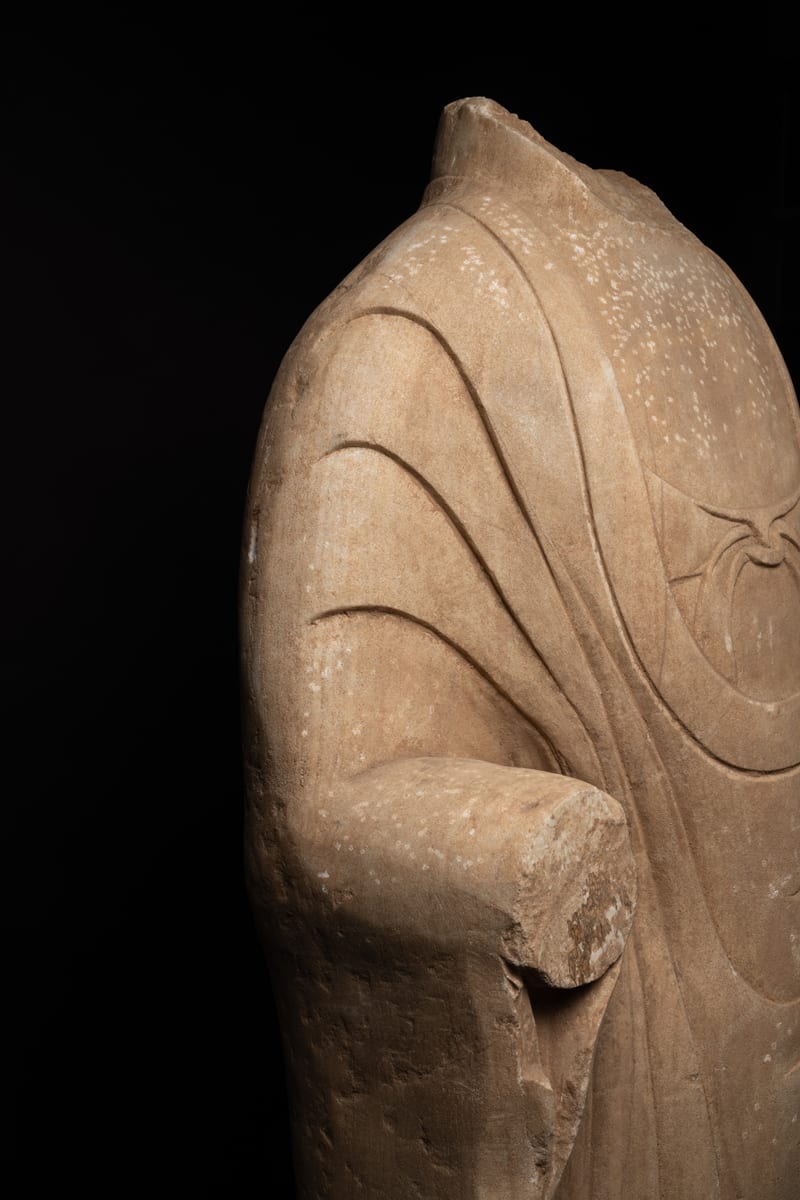Tang Marble Torso of a Standing Buddha, 7th Century CE - 9th Century CE
Stone
127 x 49.5 cm
50 x 19 1/2 in
50 x 19 1/2 in
HK.2006
Further images
An exquisitely sculpted grey basalt torso of a Buddha standing frontally. His hands, although missing, are highly probably to form the abhaya and varada mudra respectively. The outer robe, known...
An exquisitely sculpted grey basalt torso of a Buddha standing frontally. His hands, although missing, are highly probably to form the abhaya and varada mudra respectively. The outer robe, known as the sanghati, covers both shoulders and descends in delicate folds. The monumental scale of the statue allowed the sculptor to carve the drapery and scarves in fine detail. This sculpture is coherent with the typical Tang style of richness and substantial physical presence. In Tang aesthetics, being chubby is an auspicious sign since it symbolises prosperity and material abundance. Applying this style to Buddhist sculptures reflect the innumerable good merit the deities have attained. An extraordinarily fine masterpiece, the sculpture is finely and naturally carved, with remarkable attention to details especially for the clothing. The marble has a seasoned yet smooth surface and an affirming presence due to its mass.







